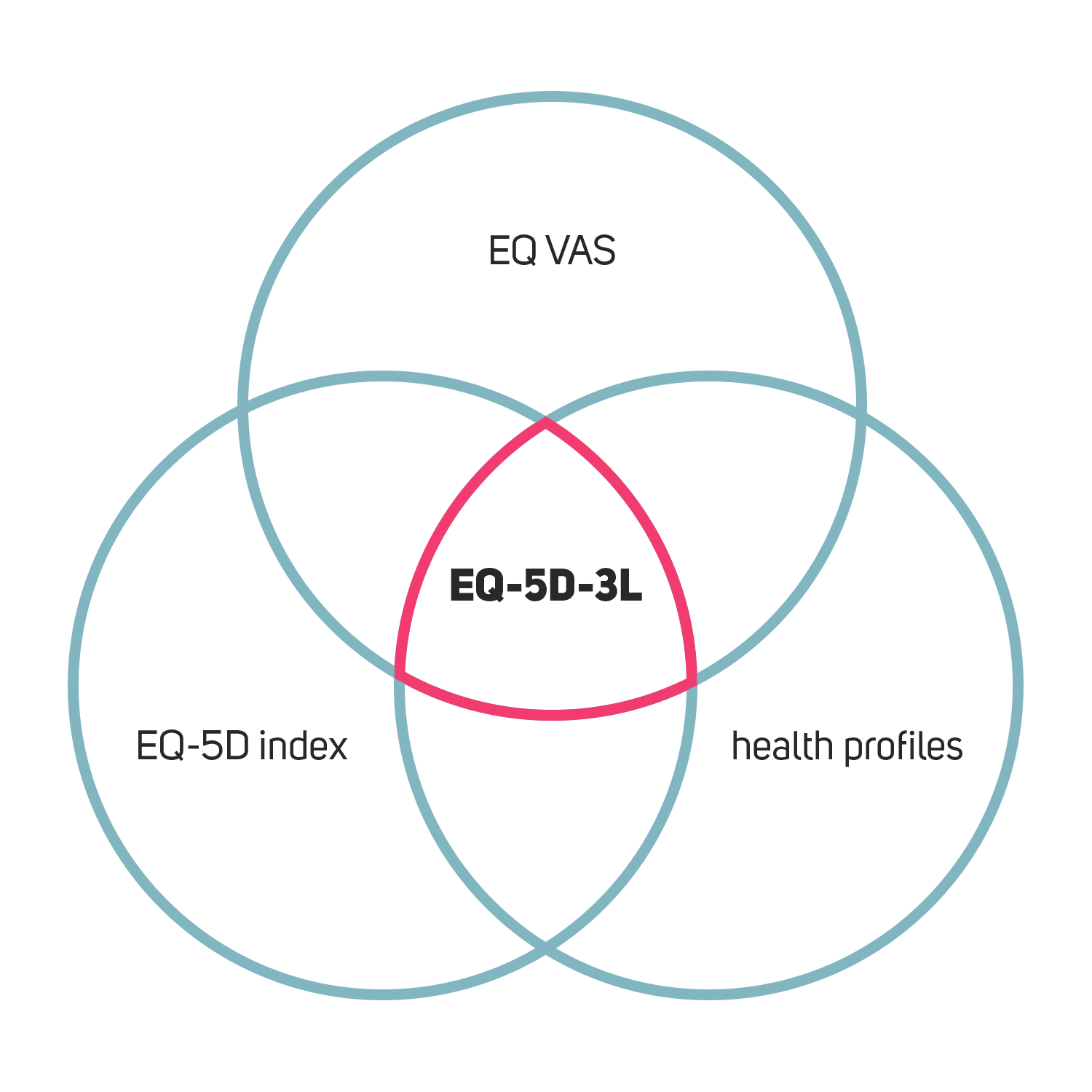Classification and Content
In 2005, a task force was formed within the so-called EuroQol group to further develop and thereby improve the EQ-5D-3L. The concrete goal was to increase the sensitivity and reduce the ceiling effect. Their efforts eventually resulted in the EQ-5D-5L as the successor to the EQ-5D-3L.1
The task force decided to keep the number of 5 dimensions and to increase the number of response options from 3 to 5 “levels”. The reason for this was the evidence from 25 years in use which could confirm the validity of the 5 selected dimensions.1-6
The EQ-5D-5L, like its predecessor, is a Patient Reported Outcome (PRO) instrument that uses 6 questions to generally assess patients’ quality of life, regardless of existing medical conditions. It also includes a vertical EQ visual analog scale (EQ VAS, 0-100 points) and a descriptive EQ-5D-5L system. The latter considers the following 5 dimensions or subscales over 5 levels or response options each.1
